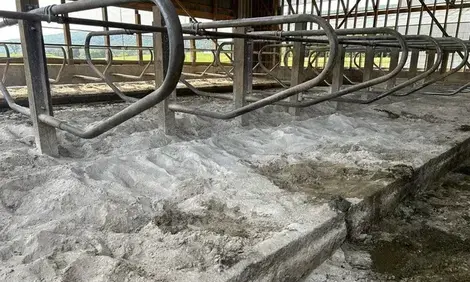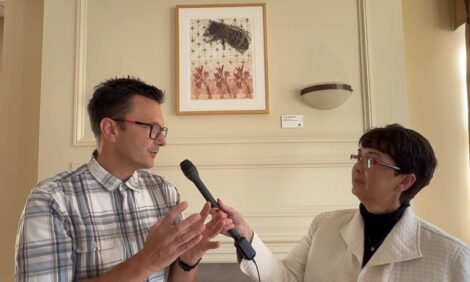



Salmonella in Livestock Production in GB - 2009 - Feedingstuffs
This annual publication from the Veterinary Laboratories Agency provides data on Salmonella reports from livestock species in Great Britain (England, Wales and Scotland). This article covers the chapter entitled 'Salmonella in Feedingstuffs'.
The isolation rate of Salmonella in both official and private samples of domestic processed animal protein has risen between 2006 and 2009 – 1.65 per cent in 2006, 2.44 per cent in 2007, 3.51 per cent in 2008 and 5.00 per cent in 2009. The last time the rate was above five per cent was in 2003 when it was 5.9 per cent.
This is of concern as although most of this material is not used in rations for food animals, there appear to be increasing problems with either the standard of heat treatment or prevention of recontamination, which could be relevant to treatment of specified risk material (SRM).
The numbers of imported protein samples tested remains low at 16 in 2009 compared with 29 the previous year. All but two samples tested over the two years were from fishmeal. One isolate (S. 18:z4, z23) was made from imported protein over the two years and this was in 2009 from fishmeal originating in Argentina.
Table 11.1 indicates the numbers of samples tested in 2008 and 2009. The numbers tested by type are similar except that a marked increase in pig extrusions tested (1,376 in 2008, 2,403 in 2009) and a marked decrease in poultry extrusions (3,369 in 2008, 1,147 in 2009) tested is evident. These changes usually reflect development of new markets or consolidation of production and testing within the feed industry.
Monophasic Salmonella 4,5,12:i:- has been included as it may be of particular public health significance. The one isolate of S. 4,5,12:i:- recorded in 2009 is phage type DT193 so is a variant of S. Typhimurium. No isolates of this phage type were isolated in 2008. The isolate was made from feed taken during a visit to a cattle farm which was being visited because of Salmonella 4,5,12:i:- associated with the cattle, so in this case the feed contamination is likely to have occurred on the farm.
S. Infantis was isolated six times in 2008 and four times in 2009. Two S. Infantis isolates were recovered from compound poultry feed in 2009 but no isolates from this product were reported in 2008. S. Enteritidis PT4 was isolated once in 2008 from bone meal and once in 2009 from meat and bone meal. S. Typhimurium numbers between the years have changed little, with nine isolates in 2009 compared with seven in 2008. No S. Hadar or S. Virchow isolations were reported in 2008 or 2009.
Of the isolates other than S. Infantis made from compound poultry feed in 2009, both S. Mbandaka (layer feed) and S. Agona (broiler feed) were also seen in Poultry Salmonella National Control Programme flock samples.
Two isolations of S. Paratyphi B var Java were found in the same month by the same company from rice bran. Although one antimicrobial test was not carried out as the isolate was not submitted to the VLA, the other isolate was sensitive to all antimicrobials tested. This serovar is relatively common in the Far East, including in reptiles, and contamination of imported feed ingredients from this part of the world via wildlife or contaminated surface water may occur. These strains are not the same as the multiple drug-resistant (MDR) strains that are prevalent in broiler production in several European countries.
Further Reading
| - | You can view the full chapter Salmonella in Feedingstuffs (including detailed tables) by clicking here. |
Further Reading
| - | You can view Reports of Salmonella in Cattle' from the same publication by clicking here. |
February 2011


